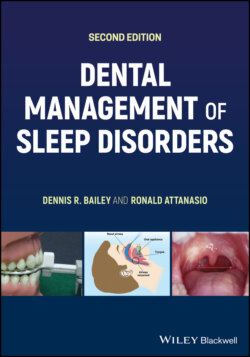Читать книгу Dental Management of Sleep Disorders - Ronald Attanasio - Страница 15
Epidemiology and Prevalence of Sleep Disorders
ОглавлениеThe origin and onset of a specific sleep disorder is often multifactorial. Epidemiology as it applies here is the study of a particular sleep disorder and how it impacts the overall health of the patient. By definition, epidemiology is the study of the occurrence of a particular disorder and how it impacts the health as well as the diseases of different and varying populations [5]. It is basically the foundation for public health. A text specific to the study of epidemiology has defined the four major concerns associated with this [6].
1 Occurrence
2 Geographic distribution
3 Population patterns of disease
4 Search for determinants of the observed patterns
Specifically, clinical epidemiology applies to how the occurrence of a particular condition, in this case a sleep disorder, is related to the occurrence as well as the distribution of a disease and how this impacts other risk factors. The ultimate goal is the improvement in people's health. Currently, the most common sleep disorders based on epidemiologic studies are [7]:
Insomnia
Sleep apnea
Restless leg syndrome (RLS)
The ultimate outcome of these early epidemiologic studies of sleep resulted in the first published classification of sleep disorders that over time has been modified and revised. At the current time, the International Classification of Sleep Disorders, third edition, (ICSD‐3) is the evidence‐based standard for the diagnosis of sleep disorders [8].
The general onset of sleep disorders as well as their progression is to some degree dependent on age, the presentation of being at risk for health‐related consequences, and even trauma. In many instances, these disorders may appear as a health issue as well as some type of emotional or psychological condition. In many instances, it is the presentation of the health problem that is first recognized or diagnosed that may have its origin as a sleep disorder. As an example sleep apnea patients may seek treatment and use more healthcare resources for the diagnosis of the cardiovascular disease (CVD) and more specifically hypertension prior to the diagnosis of the underlying cause, that being the sleep apnea [9].
The prevalence of sleep disorders based on epidemiologic studies is most often cited as occurring in each of the specific one’s as opposed to a general statistic overall. Hence, the actual distribution of a specific sleep disorder is variable dependent on the study that is presented. As an example, it is best to consider the three most common sleep disorders as previously cited.
